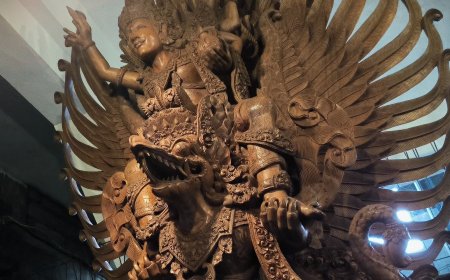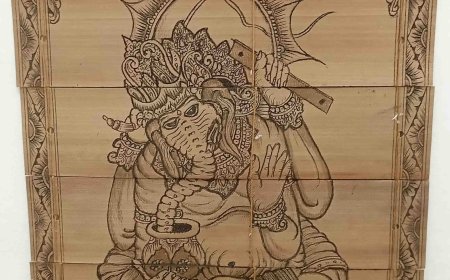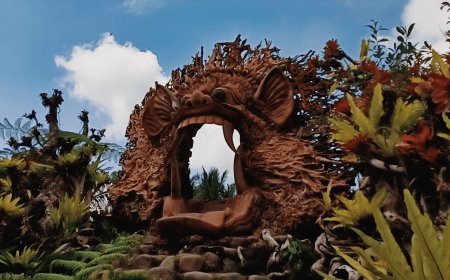Baris Pengider Dance, a Sacred Dance of the Gerih Traditional Village Manifesting the 9 Gods Guarding the Directions of the Wind
Baris Pengider Dance, A Sacred Dance from Gerih Traditional Village with Exceptional Cultural and Artistic Value. The intricately carved precision of its movements, the enchanting rhythms of its percussions, and its profound symbolism make this dance truly special for the community of Gerih Traditional Village.

Baris Pengider Dance (Source: Editorial Collection)
Baris Pengider Dance is a truly special sacred dance. With each captivating movement, it showcases the valor of the male ensemble, brimming with courage. However, what makes it truly unique is the profound hidden meaning within it. In this dance, we can witness the union of bhuana agung, symbolizing the grandeur of the universe, and bhuana alit, representing our inner selves. It signifies the harmony and balance between these two distinct worlds. Yet, what truly sets Baris Pengider Dance apart is the reflection of the concept of Dewata Nawa Sanga in every gesture. In simpler terms, this dance can be interpreted as guardians of the cardinal points (pengider-ider), delivering a profound spiritual message with unmatched elegance.
Baris Pengider Dance incorporates various elements that give it a truly distinctive character. There are several key elements that set this dance apart from others. One prominent and striking element is the use of sacred script in its movements and percussion. In the percussion, Baris Pengider Dance employs sacred scripts associated with Dewata Nawa Sanga, such as sha, bha, ta, a, i, na, ma, si, wa, ya. This is a vital part of the dance's identity. Not only in the percussion, but also in the dance movements, it integrates sacred scripts like Tri Kona and Dwi Aksara. Tri Kona encompasses ang, ung, mang, representing the concepts of creation (utpeti), preservation (stiti), and dissolution (pralina). Dwi Aksara includes ang, ah, signifying the unification of bhuana alit and bhuana agung with the concept of mother earth and father sky.
However, it's not just the use of sacred scripts that makes Baris Pengider Dance stand out. The dance's movements are composed of three main elements those are pepeson, pengawak, and pengecet. Pepeson initiates the dance with powerful movements, setting the tone for the entire performance. Pengawak, positioned in the middle of the dance, adds a distinctive touch of adoration. Meanwhile, pengecet, the final segment of the dance, showcases captivating mekotekan movements. Despite the complexity of these various elements, the dance has been simplified to make it easily accessible for the next generations. In its simplicity, Baris Pengider Dance still conveys profound messages and unmatched beauty.
Baris Pengider Dance is performed by nine young male dancers. These nine young men represent the nine deities that guard the directions or are known as the Dewata Nawa Sanga. Each of them has a distinct role within the Dewata Nawa Sanga. This is also depicted in the dance, where there is a difference in the direction and movements of their spears, which rise and fall accordingly.

Costume of Baris Pengider Dance (Source: Editorial Collection)
The costumes used in Baris Pengider Dance have a very distinctive and unique vibe compared to typical baris dances. What sets them apart is the use of scarves (selendang), spears (tombak), kober, and their richly symbolic sashes (gelung).
Each dancer wears a scarf of a different color, corresponding to the cardinal directions they represent. White represents Dewa Iswara in the east, while pink signifies Dewa Maheswara in the southeast. Dewa Brahma in the south is represented by red, and Dewa Rudra in the southwest by orange. Yellow symbolizes Dewa Mahadewa in the west, green depicts Dewa Sangkara in the northwest, blue represents Dewa Sambhu in the northeast, and black symbolizes Dewa Wisnu in the north. The dancer portraying Dewa Siwa in the center wears a scarf with tri datu colors, which are white, black, and red.
In addition to the scarves, each dancer also uses a different spear representing each deity. What truly distinguishes Baris Pengider Dance from other baris dances is the use of kober on their spears, which feature beautiful depictions of each deity in intricate designs.
The triangular-shaped ornaments in this dance are inspired by the concept of padma agung and tri murti. All of these elements, from the costumes to the accessories, add layers of meaning and deeper beauty to Baris Pengider Dance.
The inception of Baris Pengider Dance holds great significance as it originated from a grand ceremony that pays homage to deep-rooted traditions and beliefs. It all begins with the Karya Agung Melaspas, Ngenteg Linggih, Pedudusan Agung, Manawa Ratna, Mepedanan, Mepeselang, Medasar Tawur Balik Sumpah, Utama Pura Dalem, Taman Dalem, and Pura Prajapati. Baris Pengider Dance was specifically created to honor and complement this series of grand ceremonies. The creative process commenced in early August 2023.
The three parties involved in the creation of Baris Pengider Dance, namely Anom Wijaya, S.Sn as the choreographer, I Wayan Gitan Jaya, S.Sn as the music composer, and Sekha Gong Gerih Traditional Village Abiansemal as the percussion ensemble, have come together in their efforts to produce this highly valuable work. The process of creating this dance received support and blessings from Yajamana Karya and Pengrajeg Karya, adding spiritual value and significance to the performance. Therefore, Baris Pengider Dance is not just an ordinary artistic presentation but also a profound expression of culture and beliefs blessed by the collaboration of various parties.
Artists from Gerih Traditional Village have dedicatedly worked on Baris Pengider Dance as an integral part of various sacred ceremonies and celebrations in their region. This dance was specifically created to adorn the pulo kerthi during the grand tawur agung ceremony and the peak of the great works at Pura Dalem. Furthermore, Baris Pengider Dance can also be a special part of ceremonies at other puras in Gerih Traditional Village when there are offerings of penguleman pejati.
In addition to the Gerih Traditional Village region, Baris Pengider Dance can also be performed at Pura Besakih, especially during the Eka Dasa Rudra ceremony. This is because the dance shares a similar concept with Dewata Nawa Sanga, which is highly relevant to the context of this ceremony. The beauty and meaning of this dance can contribute to enriching the experience of the highly sacred ceremony at Pura Besakih.
Furthermore, Baris Pengider Dance can also be presented outside of the Gerih Traditional Village if there are other grand works with a similar concept. This demonstrates the flexibility and universal value of this dance in honoring and commemorating Dewata Nawa Sanga while celebrating the rich culture and traditions in various contexts and locations. In this way, Baris Pengider Dance can serve as a means of reverence and unity for communities that appreciate the spiritual values and traditional Balinese culture.
The creation of Baris Pengider Dance has deep roots in the grand ceremonies such as Karya Agung Melaspas, Ngenteg Linggih, Pedudusan Agung, Manawa Ratna, Mepedanan, Mepeselang, Medasar Tawur Balik Sumpah, Utama Pura Dalem, Taman Dalem, and Pura Prajapati. This dance is not merely a performing art but also a manifestation of the profound love, desire, and appreciation of the artists from Gerih Traditional Village for their cultural heritage and traditions.
Initially, Baris Pengider Dance was not recorded in the historical accounts written by art experts like Prof. Dibia. However, through the enthusiasm and creativity of the artists from Gerih Traditional Village, who wanted to have a sacred dance that would serve as the mascot of their village, Baris Pengider Dance was created. This dance has become a significant symbol in commemorating and celebrating the grand ceremonies held in Gerih Traditional Village.
Baris Pengider Dance does not yet have a patent. To obtain a patent for Baris Pengider Dance, there are still many processes to go through to perfect it. This process requires collaboration with artists from outside Gerih Traditional Village to refine the dance.
Anom Wijaya, S.Sn, as the choreographer, hopes that the future generations, particularly the youth of Gerih Traditional Village, will continue to preserve and pass on the work of Baris Pengider Dance to ensure the longevity of the art and culture in Gerih Traditional Village. Especially considering that this dance is a sacred performance that carries significant elements and meanings for the village.





























































